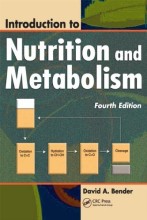NP4 Energetic conversion of nutrients, ATP
27 important questions on NP4 Energetic conversion of nutrients, ATP
Why do you need nutrient requirement
- To "maintain" the body
- Development, growth, production
- Specific achievements (sports, illness)
- Quality of life (health, life expectancy)
Material or immaterial support of physiological output
The mass flow of nutrients go to ... Aswell as ...
- Immaterial output
- maintenance of (mature) body
- heat, energy (ATP)
- input to waste
- CO2, urea
- Material output
- growing/producing body
- storage TG
- input to product
- muscle/fat
Which energy sources does the following organs use
- Brain
- Skeletal muscle (resting)
- Liver
- Heart
- Brain mainly glucose
- Skeletal muscle mainly fatty acids
- Liver mainly fatty acids
- Heart mainly fatty acids
- Higher grades + faster learning
- Never study anything twice
- 100% sure, 100% understanding
What is needed for the ATP formation?
- ATP formation requires input of energy
- ADP + Pi <-> ATP (33 kJ/mol)
- bond meteen P and ADP
- ATP is universal energy carrier of cells (currency)
ATP : ADP ratio in cell 500 : 1
How many ATP is needed for
- ATP --> ADP + Pi
- ADP --> AMP + Pi
- ATP --> AMP
- ATP --> ADP + Pi
- = 1 ATP
- ADP --> AMP + Pi
- = 1 ATP
- ATP --> AMP
- = 2 ATP
2ADP --> ATP + AMP
Energy in dietary components, 3 forms.
- Gross energy (GE)
- Digestible energy (DE)
- Metabolizable energy (ME)
What are the steps of breakdown of energy
What is the gross energy?
- can be shown by the heat released during combustion (=oxidation)
- outside the body (Bomb Calorimeter)
Gross energy includes all the energy in food product
- it is determined by as the heat liberated upon combustion
- it is not all available to the animal or human
Which two calorimeters are there?
- Bomb calorimeter
- Bio calorimeter
Glucose: C6H12O6 + 6 O2 --> 6 CO2 + 6 H2O + 2816 kJ
What is the digestible energy?
- is the gross energy (GE), but:
- corrected for digestive losses
- but relative to original amount
Digestible energy is the amount of energy that is absorbed
- It is dependent on the digestibility of a food, which is normally considered constant (98% for CHO, 95% for fat, 93% for protein)
What is the digestibility of
- CHO
- FAT
- PROT
- CHO
- faecal loss = 2%
- urinary loss = 0.0 kJ/gram
- FAT
- faecal loss = 5%
- urinary loss = 0.0 kJ/gram
- PROT
- faecal loss = 7%
- urinary loss = 5.2 kJ/gram (, when the GE is 23.6 kJ/gram)
What is metabolizable energy?
- Is the digestible energy (DE)
- corrected for urinary losses
- but relative to original amount
Metabolizable energy is what is left after accounting for energy in feces and urine
- it is what we use to calculate the energetic content of food
What is the GE, DE, ME and kcal/gram for
- CHO
- Fat
- Protein
- CHO
- 17.6 > 17 > 17 >> 4
- Fat
- 39.8 > 38 > 38 >> 9
- Protein
- 23.6 > 21.9 > 17 >> 4
Gross energy
Do cellulose (1), amylose (2), maltose (3) and glucose (4) have the same GE (kJ/gram)
- if not, make a ranking
- do these values hold for both humans and animals?
![]()
- Glucose: 15.6 kJ/gram
- Maltose: 16.47 kJ/gram
- Amylose: 17.4 kJ/gram
- Cellulose: 17.4 kJ/gram
Thus, ranking by GE:
1=2 > 3 > 4
cellulose, amylose > maltose > glucose
Similar for animal and human, GE is the same
What is the activation energy of a chemical reaction?
- In an exothermic reaction, more energy then the activation energy is released when the new bond is formed
- an exothermic reaction proceeds with an output of energy
The production of ATP can go in two ways, which ones.
- Direct: substrate phosphorylation (anaerobic)
- Indirect: Oxidative phosphorylation (aerobic)
Oxidation of nutrients - ATP (ca. 33 kJ/mol)
- ADP + Pi --> ATP
How does the formation of ATP by substrate-level phosphorylation goes? [direct]
you need one step to make ATP..?
What is the linkage between ATP utilization and oxidation of metabolic fuels? [indirect]
Give 5 examples of the usage of intracellular ATP
- Endothermic (metabolic) reactions
- Linked to H+ gradient, and cellular transporters
- ABC transporters
- Metabolic trapping
- Protein regulation
What is the role of ATP in endothermic reactions?
- Water can be used
In an endothermic reaction, less energy than the activation energy is released when the new bond is formed
an endothermic reaction requires an input of energy to proceed.
What is the role of ATP in transport of materials across cell membranes, ABC transporters?
ATP-binding cassette transporters (ABC-transporter)
- Unphosphorylated carrier protein has closed transport pore
- Phosphorylation of carrier protein opens transport pore
- Transport of substrate causes dephospho rylation of carrier protein and closure of transport pore
What is the role of ATP in transport of materials across cell membranes, metabolic trapping?
What is the role of ATP in endothermic reactions: phosphorylation of the substrate
- it is not a single step
glutamate --ATP--> gamma-glutamyl phosphate --NH4+--> Glutamine
What is the role of ATP in endothermic reactions:: phosphorylation of the enzyme?
Serine ---phosphorylation of enzyme [kinase]-->> phosphoserine ---dephosphorylation of enzyme [phosphatase]-->> serine
What is the role of creatine phosphate in muscle: storage of energy reserves
Conversion of energy
Energetic efficiency.
Glucose --> ATP
How many % 75-66-50-33-25-20 is trapped in ATP?
What is the nomenclature of
- Pyruvic acid
- Acetic acid
- Lactic acid
- alfa-keto-glutaric acid
- Pyruvic acid
- pyruvate
- Acetic acid
- Acetate
- Lactic acid
- Lactate
- alfa-keto-glutaric acid
- alfa-ketoglutarate
The question on the page originate from the summary of the following study material:
- A unique study and practice tool
- Never study anything twice again
- Get the grades you hope for
- 100% sure, 100% understanding
































